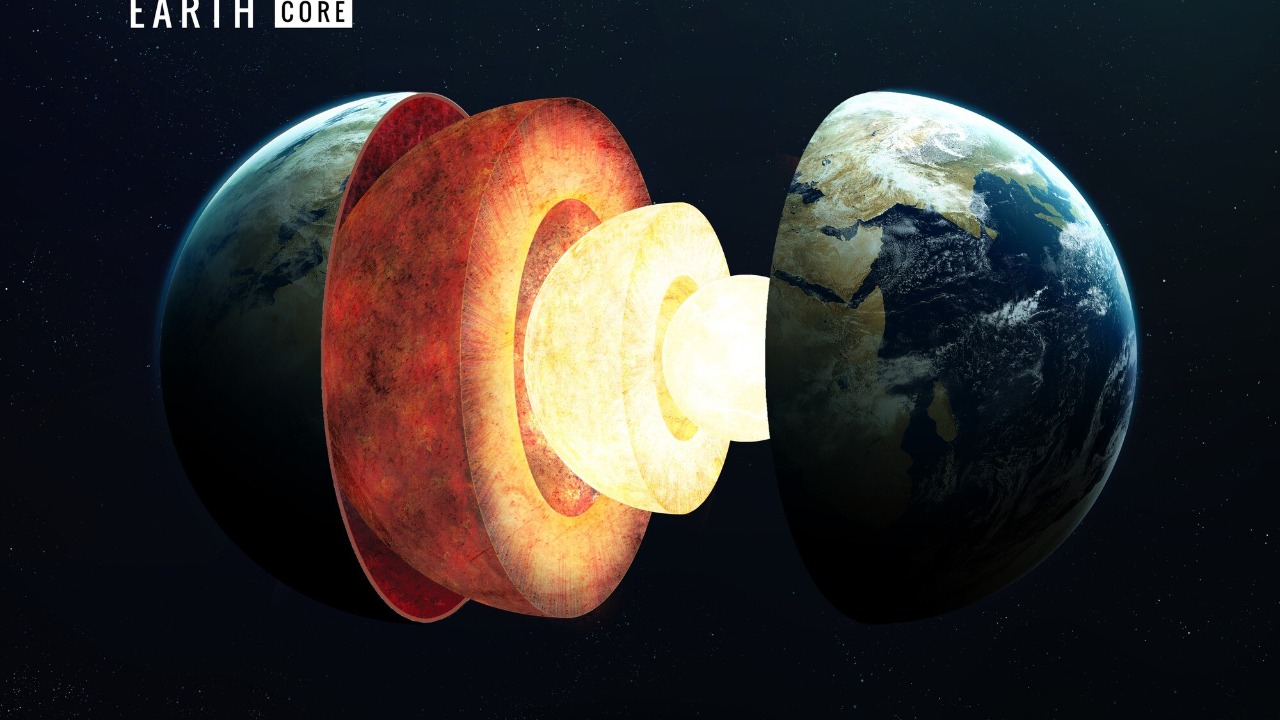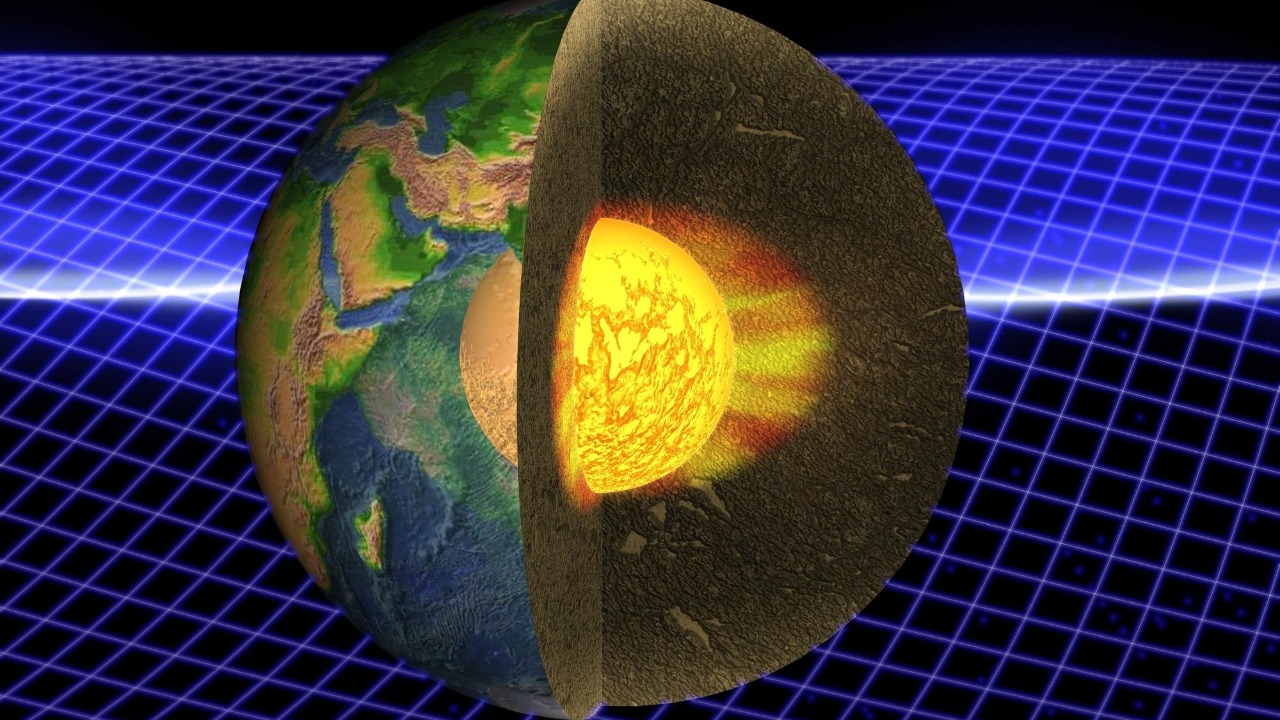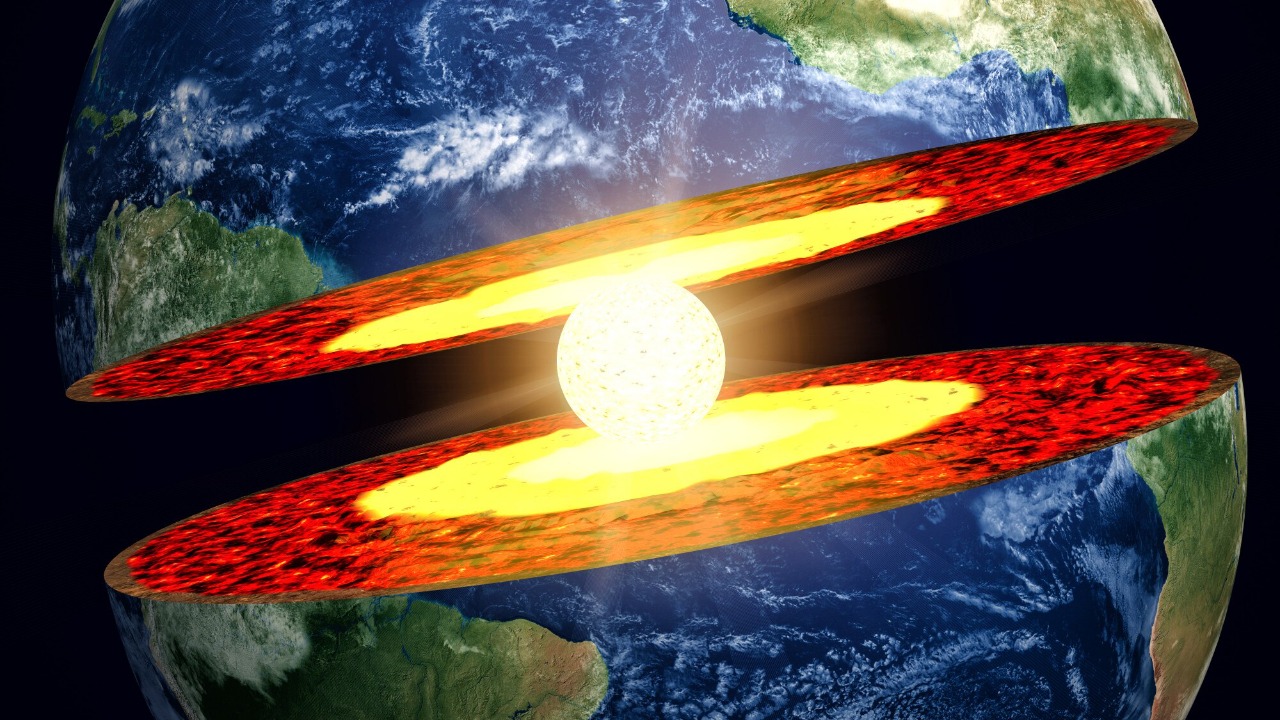
Recent research has revealed that Earth’s core is undergoing a slowdown in its rotation, a phenomenon that has piqued the interest of scientists around the world. Understanding the causes and implications of this slowdown is crucial, as it may have far-reaching effects on Earth’s magnetic field and seismic activity. The science behind the slowing of Earth’s core offers insights into what it means for our planet’s future.
The Science Behind Earth’s Core

Structure and Composition
The Earth’s core is an intriguing structure composed of two main layers: the solid inner core and the liquid outer core. The inner core is primarily made of iron and nickel, which remain solid despite the extreme temperatures due to immense pressure. Surrounding it is the liquid outer core, consisting of molten iron and nickel, playing a crucial role in generating Earth’s magnetic field through dynamo action.
These elements, particularly iron and nickel, are essential in maintaining the core’s magnetic properties. The movement of molten iron in the outer core creates electric currents, which in turn generate the magnetic field. This magnetic field extends far out into space, protecting our planet from solar winds and cosmic radiation.
Core Dynamics
The rotation of Earth’s core is a fascinating phenomenon influenced by several factors, including gravitational forces and the planet’s angular momentum. The core does not rotate uniformly; this differential rotation occurs between the solid inner core and the liquid outer core, contributing to variations in the magnetic field.
Understanding the dynamics of this rotation involves studying the complex interactions between the inner and outer core. Advances in technology have allowed scientists to examine these interactions more closely, revealing how they might be affected by changes in temperature, pressure, and even the overall structure of the core itself.
Recent Discoveries and Observations

Studies and Evidence
Recent studies published in Science and confirmed by USC research have highlighted significant findings about the Earth’s core. Using methods such as seismic wave analysis, scientists have been able to measure the core’s rotation with greater accuracy. These studies have identified that the rotation speed of the inner core is indeed slowing down.
This slowdown is a fascinating phenomenon, with evidence suggesting that it could be linked to changes in the core’s shape. The tools and techniques used to gather these insights are becoming increasingly sophisticated, allowing for more precise measurements and a deeper understanding of the core’s behavior.
Changes in Core Behavior
Not only is the Earth’s inner core slowing down, but it is also showing signs of changing shape. Variations in temperature and pressure at the core-mantle boundary could be potential causes for these changes. A study reveals that these variations might be influencing the core’s dynamics, affecting its rotation and possibly its magnetic field.
Such changes have significant implications, as they could alter the way the core interacts with other layers of the Earth. Understanding these processes is essential to anticipate how they might impact the planet’s geological and magnetic properties in the future.
Implications of a Slowing Core

Magnetic Field Effects
The Earth’s magnetic field is vital for navigation and communication systems, and changes in the core’s rotation could have profound effects on it. Alterations in the core’s movement can lead to fluctuations in the magnetic field, which could potentially disrupt navigation systems that rely on magnetic compasses.
Historical instances of magnetic field fluctuations and even reversals provide insight into how such changes have occurred in the past. Understanding these patterns is crucial for preparing for any future disruptions that may arise from the core’s slowdown.
Seismic Activity and Geology
The relationship between core dynamics and seismic activity is an area of ongoing research. A slowing core might influence tectonic movements, potentially affecting earthquake and volcanic activity. The interactions between the core and the Earth’s mantle can have cascading effects on geological processes.
Exploring these links further could reveal how changes in core rotation might affect seismic activity over time. As researchers continue to study this relationship, new insights might emerge about the Earth’s geological future.
Future Research and Exploration

Technological Advancements
Advancements in technology are playing a pivotal role in studying Earth’s core. Improved seismic monitoring and sophisticated computer modeling are providing new opportunities to analyze core behavior. These tools help scientists refine their understanding of the core’s dynamics and predict future changes.
Looking ahead, potential future missions could gather more data about the core’s behavior, offering a clearer picture of its rotation and interaction with other Earth layers. Such missions would enhance our ability to analyze the core’s impact on the planet as a whole.
Interdisciplinary Collaboration
Understanding the changes in Earth’s core requires collaboration among geologists, seismologists, and other scientists. Interdisciplinary efforts can offer comprehensive insights into the core’s slowdown, combining expertise from various fields to address complex questions.
Potential areas of research, such as studying the link between core dynamics and environmental changes, could provide further insights into the core’s behavior. By fostering collaboration, the scientific community can continue to explore these fascinating phenomena.
Broader Impacts on Earth and Humanity

Environmental Considerations
Changes in Earth’s core could have broader environmental impacts, potentially influencing global climate patterns. Understanding these effects is crucial for predicting how the planet’s climate might evolve in response to core dynamics.
The study of Earth’s core is vital within the context of broader planetary science, offering insights into not only our planet’s history but also its future. As research progresses, new discoveries about the core may shed light on its environmental significance.
Educational and Scientific Outreach
Increasing public awareness and education about Earth’s core is essential. Initiatives aimed at engaging students and the public in geoscience research can foster a greater understanding of the core’s significance. Educational programs can inspire future generations of scientists and raise awareness about the importance of studying Earth’s core.
Programs and initiatives dedicated to scientific outreach can highlight the fascinating aspects of Earth’s core, encouraging curiosity and exploration. By emphasizing the core’s significance, these efforts can contribute to a deeper appreciation of our planet and its complex systems.